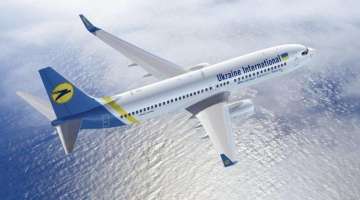All 170 onboard Ukrainian Boeing 737 have lost their lives after the plane crashed near Tehran airport early on Wednesday. The plane had took off from Imam Khomeini International Airport and was en route Ukraine capital Kyiv. The flight reportedly suffered a technical glitch after takeoff, due to which it crashed. The airliner went down near Tehran Imam Khomeini International Airport, according to local media.
An investigation team was at the site of the crash in southwestern outskirts of Tehran, civil aviation spokesman Reza Jafarzadeh said.
Flight data from the airport showed a Ukrainian 737-800 flown by Ukraine International Airlines took off Wednesday morning, then stopped sending data almost immediately afterward, according to website FlightRadar24.
The airline did not immediately respond to a request for comment.
The crash came hours after Iran launched a ballistic missile attack targeting two bases in Iraq housing US forces in retaliation for the killing of Revolutionary Guard Gen. Qasem Soleimani.
A look at Boeing 737-800 crashes
The Boeing 737-800 is a very common single-aisle, twin-engine jetliner used for short to medium-range flights. Thousands of planes are used by airlines around the world. Introduced in the late 1990s, it is an older model than the Boeing 737 MAX, which has been grounded for nearly 10 months following two deadly crashes. A number of 737-800 aircraft have been involved in deadly accidents over the years.
In March 2016, a Flydubai 737-800 from Dubai crashed while trying to land at Rostov-on-Don airport in Russia, killing 62 onboard. Another 737-800 flight from Dubai, operated by Air India Express, crashed in May 2010 while trying to land in Mangalore, India, killing more than 150 onboard.
Chicago-based Boeing Co. did not immediately respond to a request for comment. Boeing, like other airline manufacturers, typically assists in crash investigations. However, that effort, in this case, could be affected by the U.S. sanctions campaign in place on Iran since President Donald Trump unilaterally withdrew from Tehran’s nuclear deal with world powers in May 2018.
Both Airbus and Boeing had been in line to sell billions of dollars of aircraft to Iran over the deal, which saw Tehran limit its enrichment of uranium in exchange for the lifting of economic sanctions. But Trump’s decision halted the sales.
Under decades of international sanctions, Iran’s commercial passenger aircraft fleet has aged, with air accidents occurring regularly for domestic carriers in recent years, resulting in hundreds of casualties.
Also Read | Air hostess suffers 7 leg fractures as plane hits massive hailstorm, climbs 500 feet
Also Read | 14 killed as Bek Air plane with 100 onboard crashes into two-storey building in Kazakhstan
Latest World News

